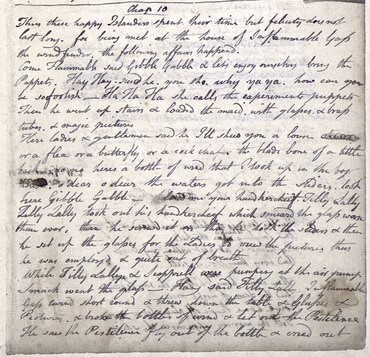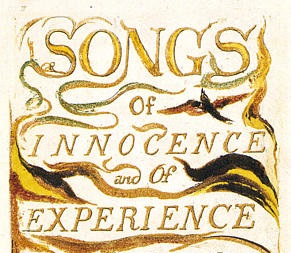In a departure from my previous investigation into Blake’s use of color, which focused on brightness and change over time, I have here considered the possible relationships between the mythological characters and the overall palette of a copy. For this project, I’ve focused on copies A, M, and O of America a Prophecy, looking at the depictions of the characters Urizen, Orc, and Albion.
I also attempted to avoid some of the problems that I ran into before, namely messy data and a limited plan for investigation. Here, I began by finding establishing relatively clean sets of image objects that correspond to each character, and while counting the pixels by hue value, excluded those HSV (Hue, Saturation, Value) values which likely would read only as white or black to the naked eye (i.e. removing all HSV values where s < 25 or v < 25). Moving forward with cleaner data, I first looked at each character in each copy individually, then attempted to look for any commonalities across copies.

While Hue in HSV is typically on a 0-360 scale, Python utilizes a 0-180 scale represented above.
Individual Copies
Before attempting to make generalizations across copies or characters, I first wanted to take a more in-depth look at the color composition of individual images. The charts (and corresponding image objects) below provide an example of this analysis, which was accomplished by counting each individual pixel in a given image, sorting all of these by their hue value, and then finding the percentage of each image composed of the color range.

A, 11 – Percentage of Hue Values 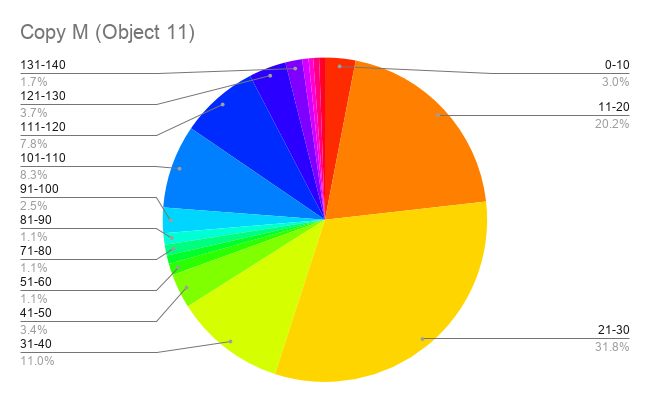
M, 11 – Percentage of Hue Values 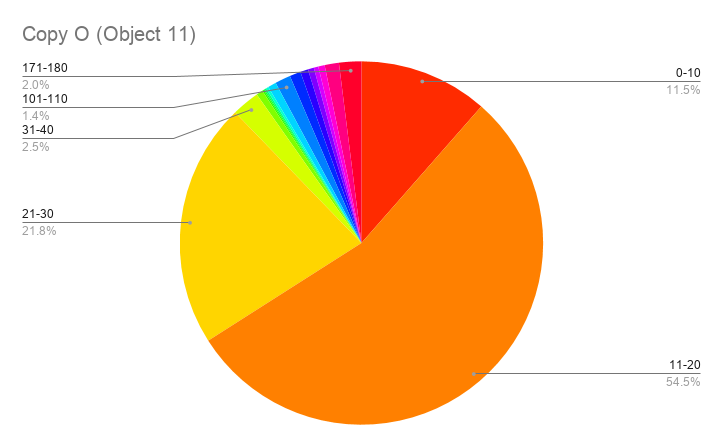
O, 11 – Percentage of Hue Values 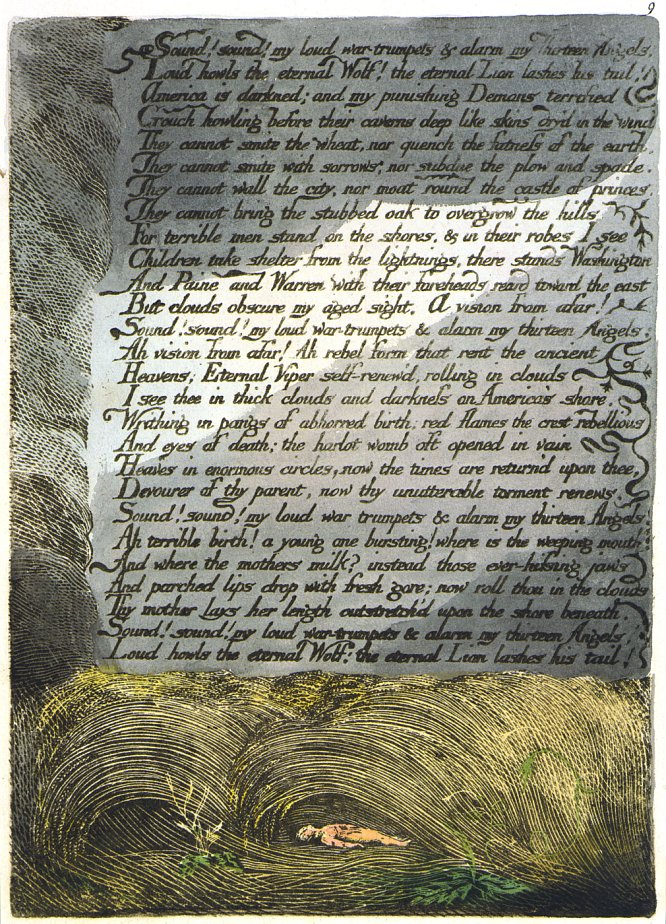
Object 11 – Copy A 
Object 11 – Copy M 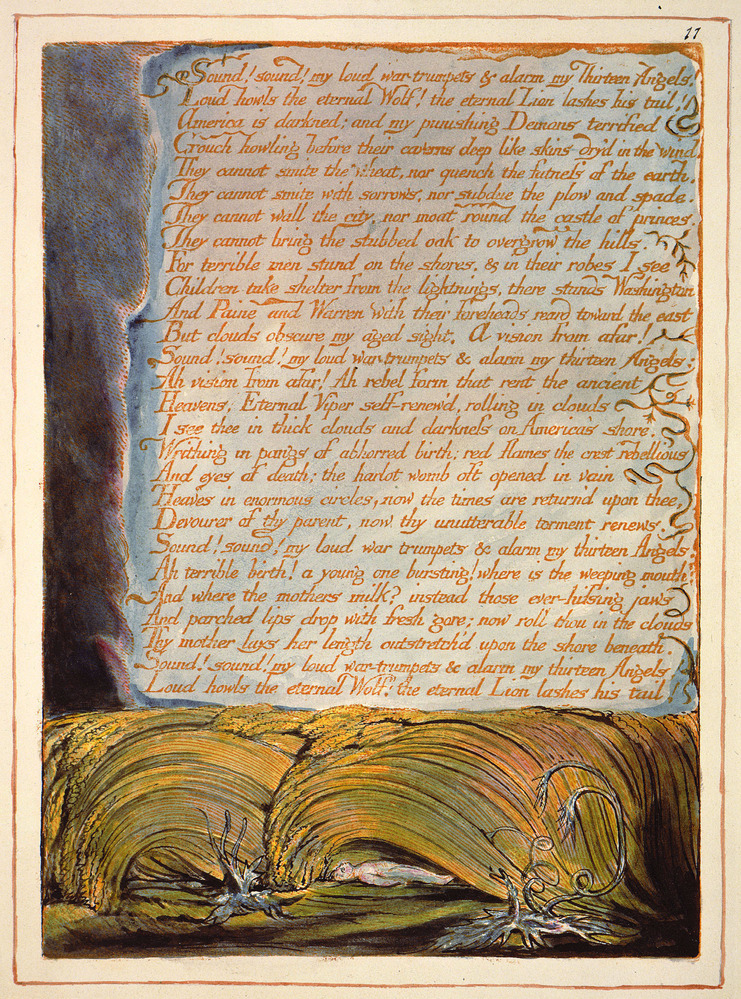
Object 11 – Copy O
While the program seemed to be working as intended, I was once again confronted with the question of dealing with the ink outline and text and text background of the objects. Although I decided to continue with the analysis as it was– removing any very light or dark colors– I wonder if further analysis ought to keep closer track of these values as well, even if separately from general hue analysis.
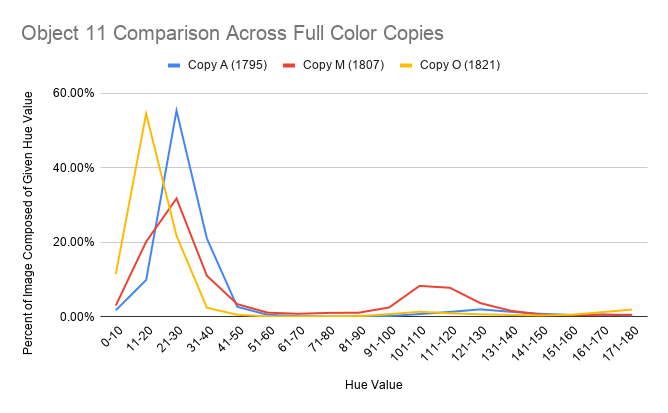
Having finished my analysis of all of the individual image objects in copies A, M and O, each version of Object 11 seemed to indicate that there would be trouble ahead in comparing such vastly different palettes. While there is some clustering of peaks around the warm tones (0-50), this chart left me wondering if this type of analysis would be more useful in my previous exploration of palette changes across time, rather than attempting to find generalizations across copies.
Across Copies
I was hesitant to test the copies against each other, tempted to agree with Northrop Frye’s assertion that “there is no fixed color symbolism in [Blake’s] designs: every copy is colored differently” (Frye, 38). Comparing the average composition of each copy against the others, there seems to be a wide variation in the colors used in every copy, even after fifteen image objects have been averaged together. Finding differences from the average that persisted across copies seemed unlikely.
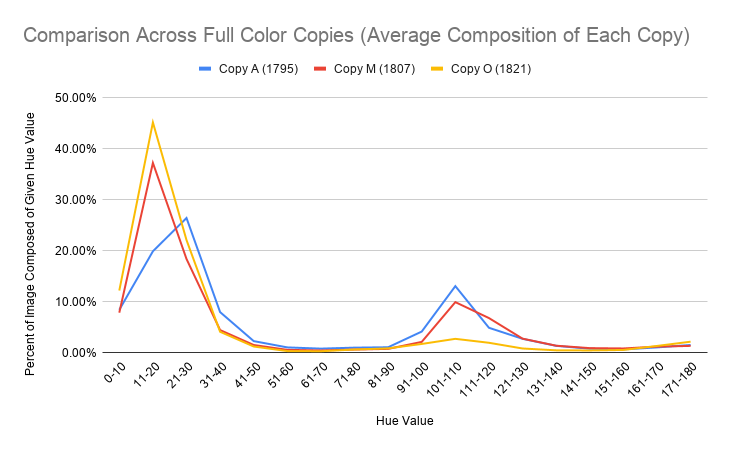
Frye’s assertion continued to hold up as I compared these three depictions of Urizen visually. However, as I began to compare depictions of Orc, Albion, and Urizen to the means of each copy, there seemed to be definitive clusters of peaks across copies. This led me to average the color composition of copies A, M, and O of America a Prophecy and the composition of image objects which depict each of the characters.
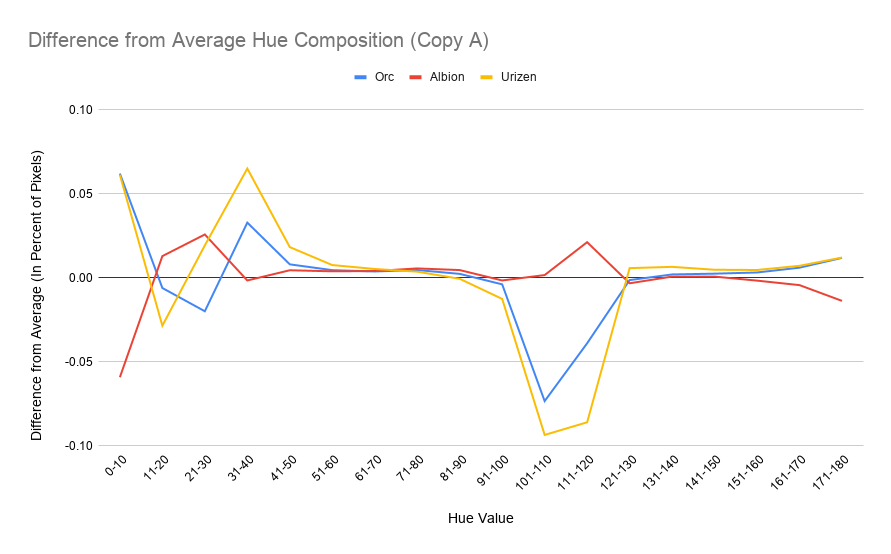
A – Difference from Average Hue Composition 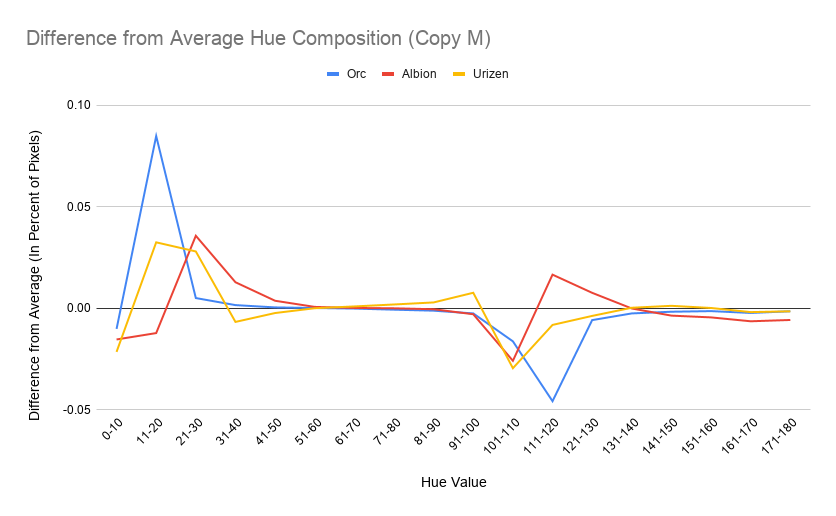
M – Difference from Average Hue Composition 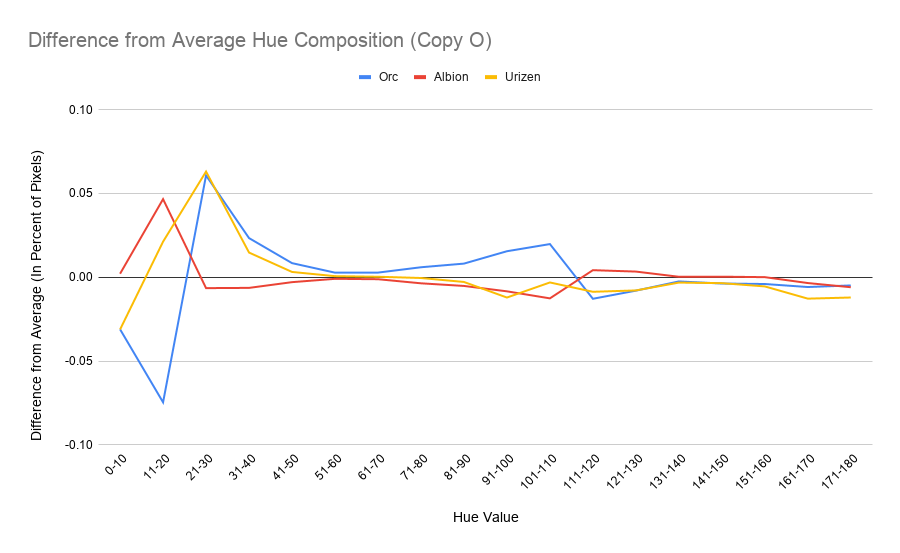
O – Difference from Average Hue Composition 
A – Urizen (from Object 10) 
M – Urizen (from Object 10) 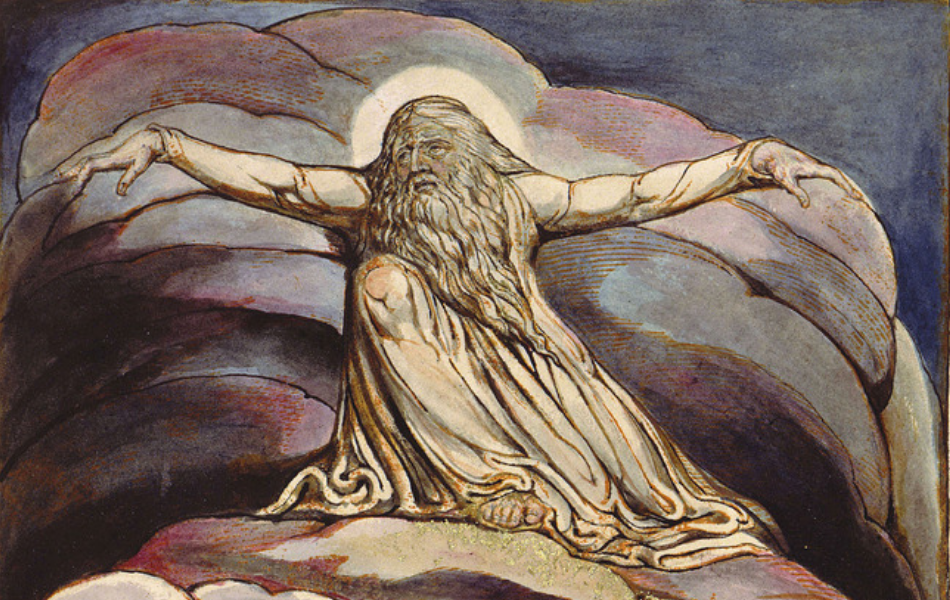
O – Urizen (From Object 10)
The following chart shows these averages and displays a tendency towards certain groups of colors being used for each character, although their statistical significance is questionable at best (p > 0.05 for all data sets compared against the mean). Nevertheless, the peaks of all of the analyzed characters at or around 21-30 indicate that orange was used more often than the average for all copies to depict each of the characters. Perhaps of greater interest is the divergence occurring from 101 to 130. While the use of indigo in image objects depicting Orc and Urizen appears lower than average, Albion spikes upwards, with 4.8% more of the average composition of an image of Albion being composed of indigo.

Although none of these tendencies passed any statistical significance test, the tendencies seen above certainly lend themselves to further investigation, extending to illuminated texts besides America a Prophecy to compare depictions of Blake’s mythological figures regardless of the work in which they appear. As the project progresses, these tendencies may average out and disappear, or they may grow more pronounced and reveal that there is consistent color symbolism after all.
References
- Python HSV Chart
- Frye, Northrop. “Poetry and Design in William Blake.” The Journal of Aesthetics and Art Criticism 10, no. 1 (1951): 35-42. doi:10.2307/426786. Available on JSTOR.

